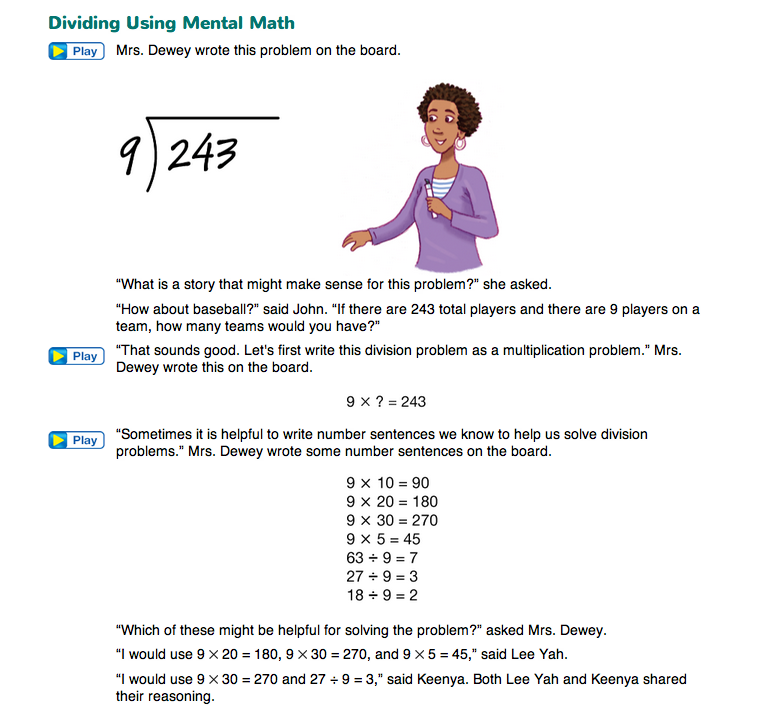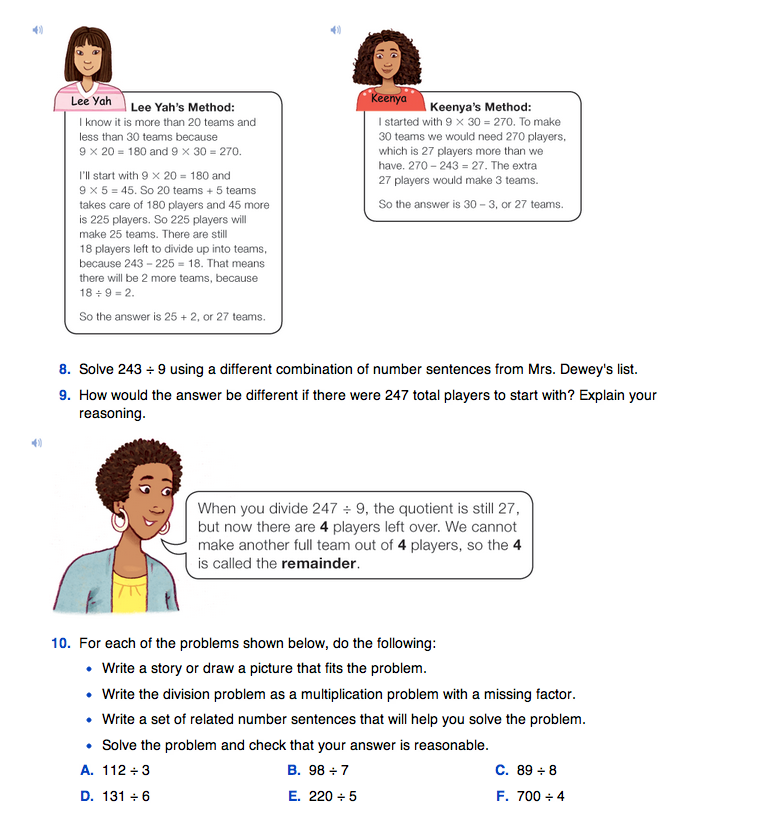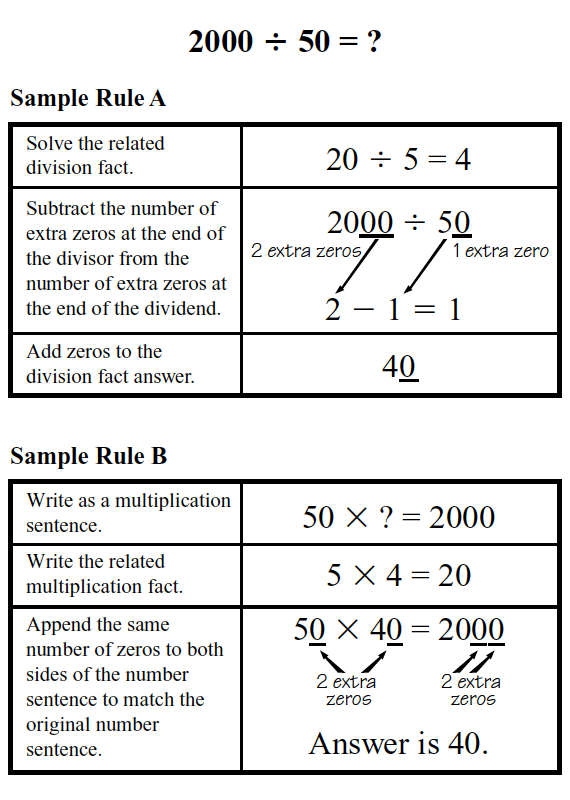Using Mental Math to Divide
Est. Class Sessions: 1Developing the Lesson
Part 2: Dividing Using Mental Math
Begin this part of the lesson by reading and discussing the vignette in the Dividing Using Mental Math section in the Student Guide. Two sample solutions using a cluster of related number sentences are discussed for the problem 243 ÷ 9. Ask students to read through Lee Yah's and Keenya's strategies with a partner. Then ask them to explain one of the girl's strategies to their partners in their own words.
Write the following on the board.
Have students work in pairs to write a story or situation that matches the division problem on the board. Choose one of the stories to use as the context for the problem.
The following is an example:
We will refer to this example throughout the discussion. The story you use may be different.
Ask:
Write the number sentences on the board as students say them. If these number sentences do not come up, add them to the list:
8 × 4 = 32
8 × 5 = 40
8 × 9 = 72
8 × 40 = 320
8 × 50 = 400
24 ÷ 8 = 3
48 ÷ 8 = 6
56 ÷ 8 = 7
Ask students to solve the problem with a partner using the number sentences on the list. Have each pair of students record their strategies. Again, have two or three pairs of students share their strategies with the whole class. The sample dialog shows a possible discussion with students as they explain their mental math strategies.
After students have practiced using related number sentences to solve the division problem posed, and the opportunity to discuss their mental math strategies, direct their attention back to the Student Guide. Have students work on Questions 8–9 which revisit the problem Mrs. Dewey posed of dividing players into teams.
In Question 8, students solve the problem using a different set of related facts. Question 9 relates to students' understanding of the remainder within the context of the problem. Dividing 247 total players into teams of 9 each results in the same quotient of 27 teams, but there is now a remainder of 4 players. Students could decide that 4 teams will have 10 players while the rest have 9 players.
Use the remainder that occurs in Question 9 to formally introduce the term remainder. Write the word on the board, explaining that when the leftover amount is less than the divisor, we cannot divide any further and still get a whole number answer. Use the word remainder in place of leftover throughout the rest of this unit so students become used to the term.















